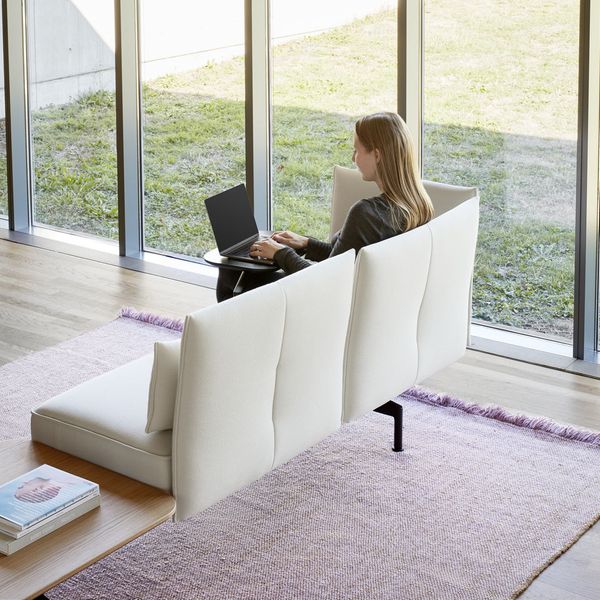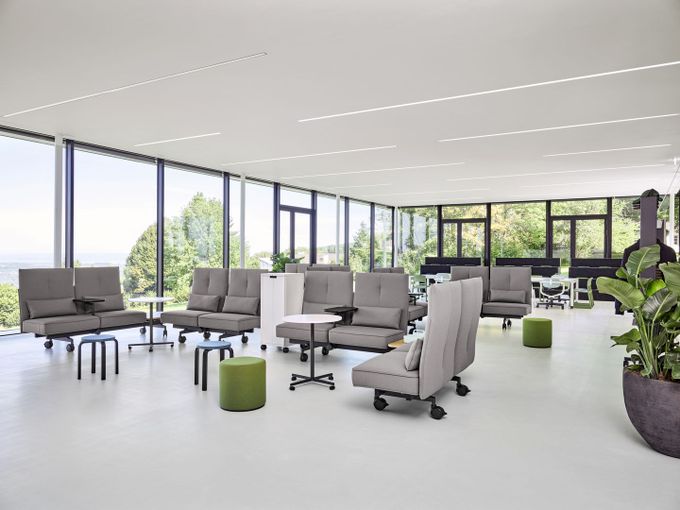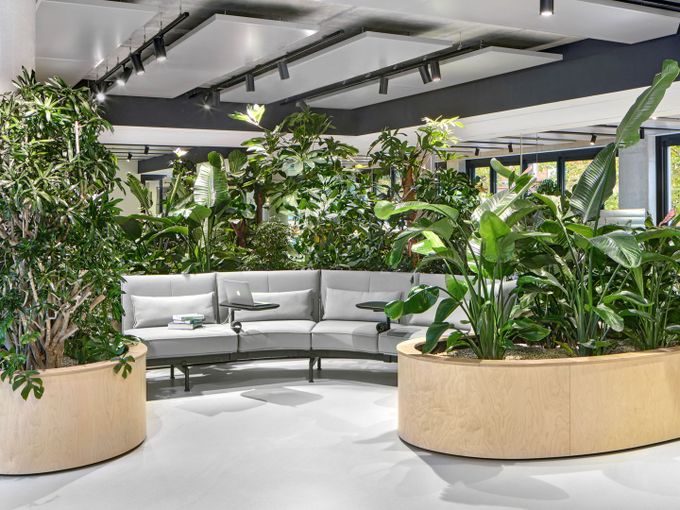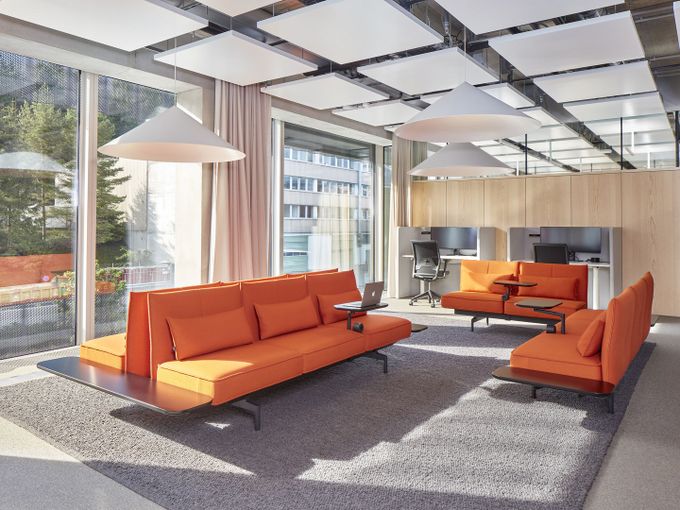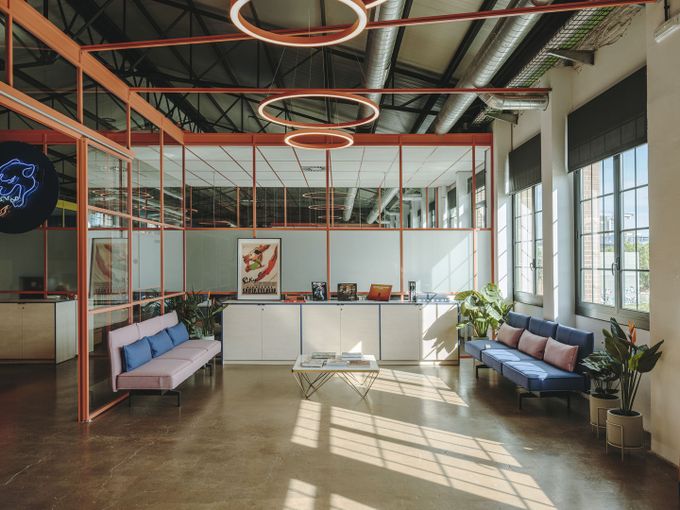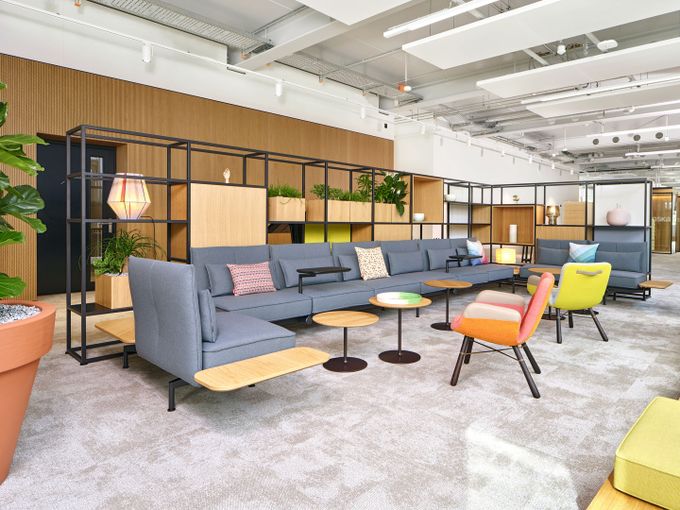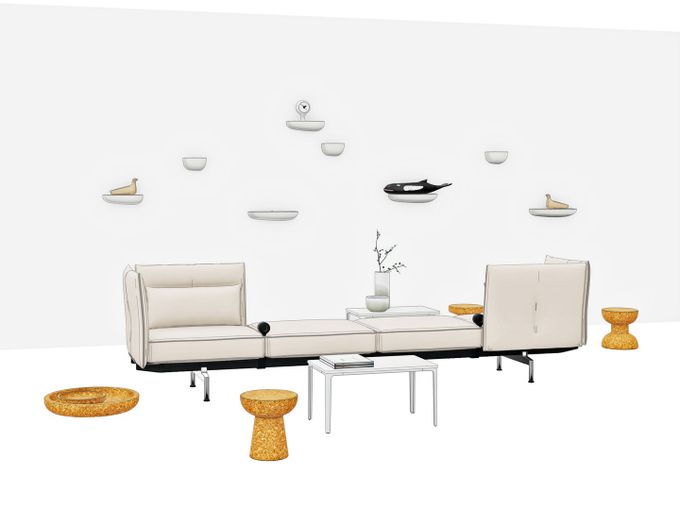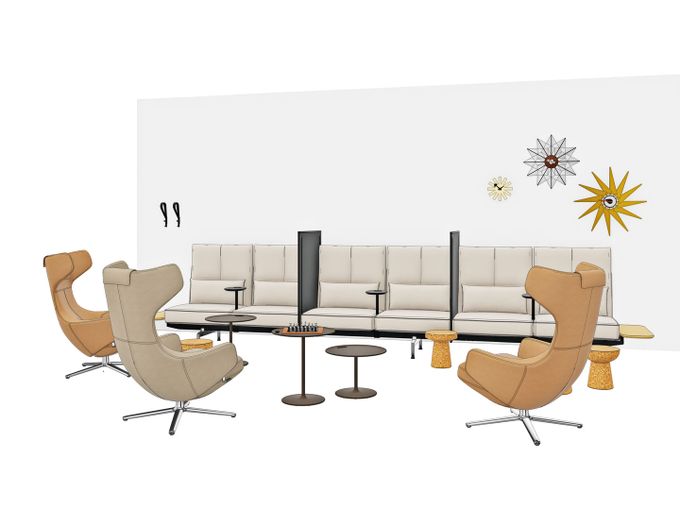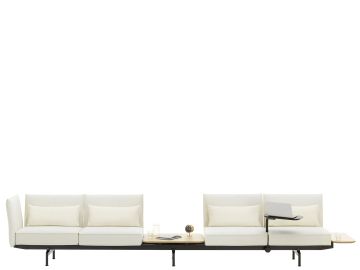Soft Work
Edward Barber & Jay Osgerby, 2018

Never since the introduction of computers have office structures and work habits undergone such a radical transformation as that taking place today. Public spaces are becoming workspaces: thanks to communication technology, people can now work in hotel lobbies, cafés, airports or even parks. And in reverse, offices are becoming public spaces: many companies are now creating open and inspiring locations in which employees – or external visitors – can relax, hold meetings or spend the day working. As work is no longer tied to a specific location, new behavioural patterns have developed, which are gradually finding their way into the office. For example, the sofa has become a place on which to work – even though it is not necessarily suited to this task from an ergonomic viewpoint.
With this in mind, Vitra and the design duo Edward Barber and Jay Osgerby have devised and developed the new seating system Soft Work, uniting expertise from the home, office and public sectors. Instead of creating a working environment centred around desks with peripheral sofas, Soft Work has developed into a system in which table workstations are focused around a seating landscape. Barber and Osgerby see this as a long-term development: 'The workstation is going the same way as the dining room – it’s disappearing as an archetype. The desk has had its day. With mobile technology you need a place to sit occasionally, or a comfortable place to hang out. That’s our belief.'
Soft Work offers a versatile platform for both individuals and teams. Besides ergonomic seating options, users also find practical table surfaces, power outlets and charging stations. Mobile tables and chairs can be pulled up as needed and put away again, and the addition of panels creates spaces for quiet, concentrated work. Thanks to its modular concept, Soft Work can be easily assembled into diverse arrangements, enabling architects to structure the internal spaces of a building, create specific focal points, or define flexible public areas.
Soft Work offers a versatile platform for both individuals and teams. Besides ergonomic seating options, users also find practical table surfaces, power outlets and charging stations. Mobile tables and chairs can be pulled up as needed and put away again, and the addition of panels creates spaces for quiet, concentrated work. Thanks to its modular concept, Soft Work can be easily assembled into diverse arrangements, enabling architects to structure the internal spaces of a building, create specific focal points, or define flexible public areas.


All these options are possible due to the sophisticated construction of Soft Work and its technical details: the arm-mounted desks are movable and enable diverse seating and working positions; the power sockets are located between the seat cushions and can simply be pivoted upwards for comfortable use; partition screens can be used to divide up zones and create quiet sheltered spaces. All of the functional elements are seamlessly and elegantly integrated into the appealing overall aesthetic. Equipped with generously padded seat cushions and flexible backrests, the sofa offers comfortable working conditions, even over longer periods of time.


Straight and curved elements in single or double versions, platforms, tables, panels, arm-mounted trays, power and data connections, optional castors for greater agility, along with a choice of covers in a wide range of colours, offer countless possibilities for customised configurations of Soft Work that suit individual needs and spaces – whether in offices, coworking centres, universities, station halls, airport terminals or restaurants.
Soft Work is available on castors for even greater flexibility, transforming the sofas into central adaptable elements within agile office environments. The seating arrangements can be spontaneously reconfigured to suit the workplace dynamics or the project at hand – and should additional space be needed, the sofas can be easily pushed to one side.


Interview with the international boarding school Institut auf dem Rosenberg in St. Gallen, Switzerland, on the use of Soft Work on castors for an agile learning environment.
Interested in the Soft Work?
Would you like to learn more about our products and their role in shaping spaces? Our team is here to help – we look forward to hearing from you!
Vitra Cushions
Available in a selection of sizes, cover materials and colours, the Vitra Cushions perfectly complement the sofa.
Information
Colours and materials
CAD data
Product and safety information
Dimensions
Colours and materials
CAD data
Product and safety information
Dimensions


